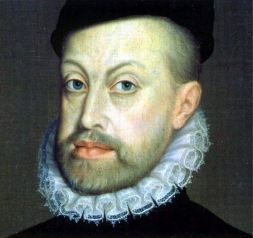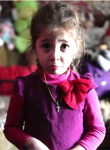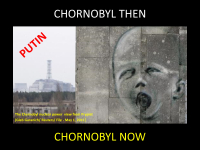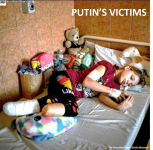Our websites offer information mostly for educational purposes with no intent to alter health care protocols nor to serve as a sole source of medical information.
Always seek the advice of your local health care provider.
|
× UKRAINIAN CHILDREN WITH DISABILITIES HAVE SPECIAL NEEDS |
HAPSBURG FACIES
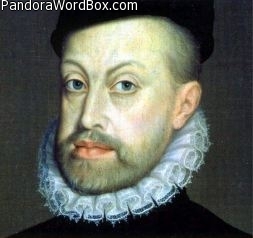
"Felipe II by Sofonisba Anguissola, a well known female artist" (see related A | B), 1532 Anguissola Sofonisba (known as Angussola or Anguisciola Sophonisba ) El Prado - Coleccion Real Alcazar, Madrid, Spain
This portrait (here only details of his face are shown) was made when Felipe II was married to Isabel or Elizabeth of Valois (see related image), whom he married in 1559 when she was only 14 years old (b. 1545). At the time black clothing and high hats were fashionable.
Phillip III loved his "child-bride" dearly - she delivered a stillborn son in 1565, stillborn twin girls in 1567 and died after delivering an infant daughter who did not live in 1568 (there are several Habsburg marriages without viable "issue"). Are these reproductive failures a sign that the "Habsburg" autosomal dominant mutation of Phillip III may be a cause? - it is known that many sorts of gene mutations are associated with "reproductive failures" (see companion images and notes concerning Carlos II who was infertile and also note that Margaret, the daughter of Maximilian I and sister of Carlos I, the grandfather of Philips II, conceived once and delivered a stillborn male. The ultimate level of "Teratothanasia" is sterility followed by infertility, sub-fertility, recurrent abortions (miscarriages in vulgar parlance), stillbirths, and infant and child mortality. Teratohanasia is a sign of negative impacts of mutated genes or environmental teratogens such as alcohol, among others.
The artist painter is Anguissola Sofonisba (1532-1625), born to a noble family in Cremona. Highly educated, she was instructed in fine arts and met Michelangelo, who recognized her talent. Her ascent was rapid and led her paintings of the Duke of Alba, Elizabeth or Isabel de Valois, and Philip or Felipe II - she was appointed to the Spanish court as a lady-in-waiting and official painter to the king. After the death of Elizabeth or Isabel, with the help of the King, she married an aristocrat and moved to Palermo. As stated in an article in Wikipedia, "her lasting impact on the fine arts are evident at galleries in Boston, Bergamo, Brescia, Budapest, Madrid, Naples, Siena, and Florence, among others".
Not shown (see full image elsewhere) is the Order of the Golden Fleece on the chest and a hand of Phillip II holding a rosary - an emblem to denote the celebration held very first Sunday of October to commemorate the Lepanto Spanish armada victory over the Ottoman Turks (October 7 of 1571, a battle during which don Diego de Cervantes was seriously wounded). Apparently, in 1573, Anguissola changed the placement of the King's hand from touching the Golden Fleece to the rosary (experts feel that she did so to adapt the portrait as a pair with the portrait of Filipe's fourth wife, Ana de Austria).
This portrait was looted by the French to hang in the Royal collection in Paris - after the defeat of Napoleon in Waterloo, it was returned to the El Prado Museum in 1827.
To view a full scope of Habsburg related postings and notes please view the image of Maximilian I with his spouse and descendants.
20220124 ww
|





